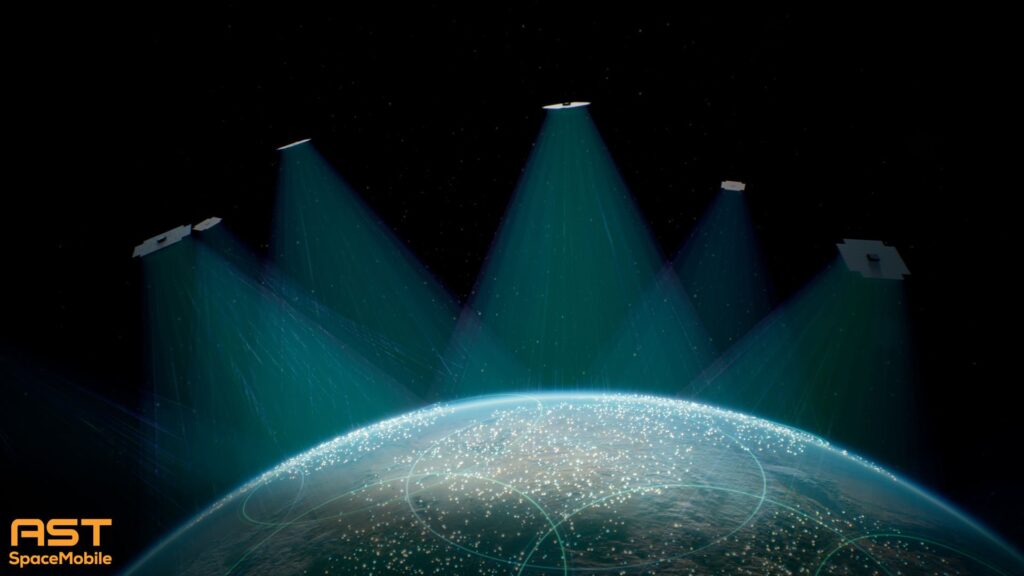Disclaimer: “Beyond astro-ph” articles are not necessarily intended to be representative of the views of the entire Astrobites collaboration, nor do they represent the views of the AAS or all astronomers. While AAS supports Astrobites, Astrobites is editorially independent and content that appears on Astrobites is not reviewed or approved by the AAS.
More and more frequently, members of the public are made aware of satellites that may drastically change our night sky after they have already been launched. These satellites have dire effects on the field of astronomy, indigenous religious practices life cycles, and our quality of living. In light of the recent launch of the enormous AST SpaceMobile satellite, Blue Walker 3, it is worth understanding the very few ways that issues with satellites can be addressed. The consideration is more than urgent: Blue Walker 3 can outshine Venus in the night sky. AST plans to have 110 of these satellites by 2024.

Wait
Nature already does some of the heavy lifting (pulling?) when it comes to to taking down satellites. The energy exerted by friction between the satellite and the thin layer of atmosphere at its orbit creates an atmospheric drag, removing energy from the system. As energy must be conserved, the orbit decays, and the satellite moves into a closer orbit about the earth. In this way, the earth will eventually reclaim all satellites that are put up into orbit, it’s simply a matter of time.
In some cases, this is exactly what satellite companies are banking on! It also means that oftentimes satellites are launched without a plan to retrieve them or dispose of them, sometimes because companies go bankrupt during the mission. The European Space Agency (ESA) provides a “best practices” guideline to mitigate this effect, but it is a suggestion— not a law. In fact, it was not until earlier this week that the Federal Communications Commission (FCC) Chairwoman Jessica Rosenworcel proposed the first rule to require satellite de-orbits after five years, scheduled for an official vote this September 29.
As a result, many companies neglect to establish a plan for reclaiming their satellites. Instead, they rely on a number of self-destruction mechanisms, some of which may create new problems. Depending on the distance from the earth, a satellite in orbit can take years, decades, or centuries to decay. This is, of course, assuming they don’t crash into each other. In this case, debris can take an unpredictable number of years to decay, and act as a spray of bullets into nearby spacecraft for decades.
In other words, satellites that live decades to centuries will outlive those who launched them. In the best case scenario, those with shorter lifespans crash to Earth or burn up in the atmosphere if they’re small enough. Some controlled landings end up in the “spacecraft cemetery,” a point in the ocean far away from human life, while others are strewn about the earth. Other times, they will be retired to higher orbits above the earth in the graveyard orbit, which will instead take millions of years to return to earth.
Catch
When retiring spacecraft to a cemetery or cremation are not possible, other cleanup efforts have been proposed. This is especially crucial to avoid the Kessler Effect— a runaway effect of broken satellites creating chain reactions of space debris that is unstoppable once reached. This will eliminate all GPS, navigation, space-based internet, the ISS, and future space missions.
Over 4,800 bodies orbit the Earth, and several tens of thousands more are proposed. In an effort to scoop up some of the debris, countries and private companies alike have risen to the challenge. The technology is various and creative:
- Manual capture with robotics aboard other satellites, such as ClearSpace-1 (set to launch 2025-26).
- A giant fishing pole, launched by JAXA in 2014. Its giant electrodynamic space tether was meant to attract and burn debris, but unfortunately the tether failed to deploy and the body became debris itself.
- Capture and dispose, such as commercial “space sweepers” from Astroscale with ESA by 2030. In this instance, OneWeb satellites will have some fuel left to return to Earth. If this should fail, the satellites are also equipped with grappling and magnetic capabilities such that they may be picked up by a servicer craft, known as “ELSA-M,” planned to launch in 2024.
- A Harpoon. Literally a pen-sized harpoon. This unique idea is designed to capture space debris and reel it into a servicer craft to be removed or dragged to a lower orbit to be burned. Tests have so far been successful by RemoveDEBRIS!
…as you can imagine, debris removal is extremely hard to do, and doesn’t completely solve the problem. Meanwhile, the number of satellites and the debris is exponentially increasing.

Simply Do Not
The most failsafe way to avoid issues with satellites is to simply not put one up there in the first place. Yet, frustratingly, there is often very little notice given about new satellite launches, such as the new Blue Walker 3, despite their potential for wide-ranging effects on astronomy, the night sky, and the Earth itself.
Citizens have few options once large companies have made private decisions that affect our lives. In the meanwhile, you can still write to your politicians, boycott companies that use satellite services, explore alternatives to those services like fiberoptic cables, or boycott watches that communicate directly to satellites. In the U.S., there is a $48 billion dollar initiative for internet for all to be distributed to states, providing an important opportunity to support fiberoptic internet rather than signing on to satellites.
For readers in scientific spheres on the job hunt, I also encourage you to work for these cleanup companies you may not know about rather than the big name companies that you do know about. Satellites need to be thought of as contributors to the growing problems of the planet, and their launches and subesequent clean up need to be approached with heavy responsibility.
Want to help the cause? There is a growing list of ways to help in this previous AstroBite and thisSky and Telescope article.
Astrobite edited by Michael Foley
Featured image credit: Nokia/AST Space Mobile via newscientist




